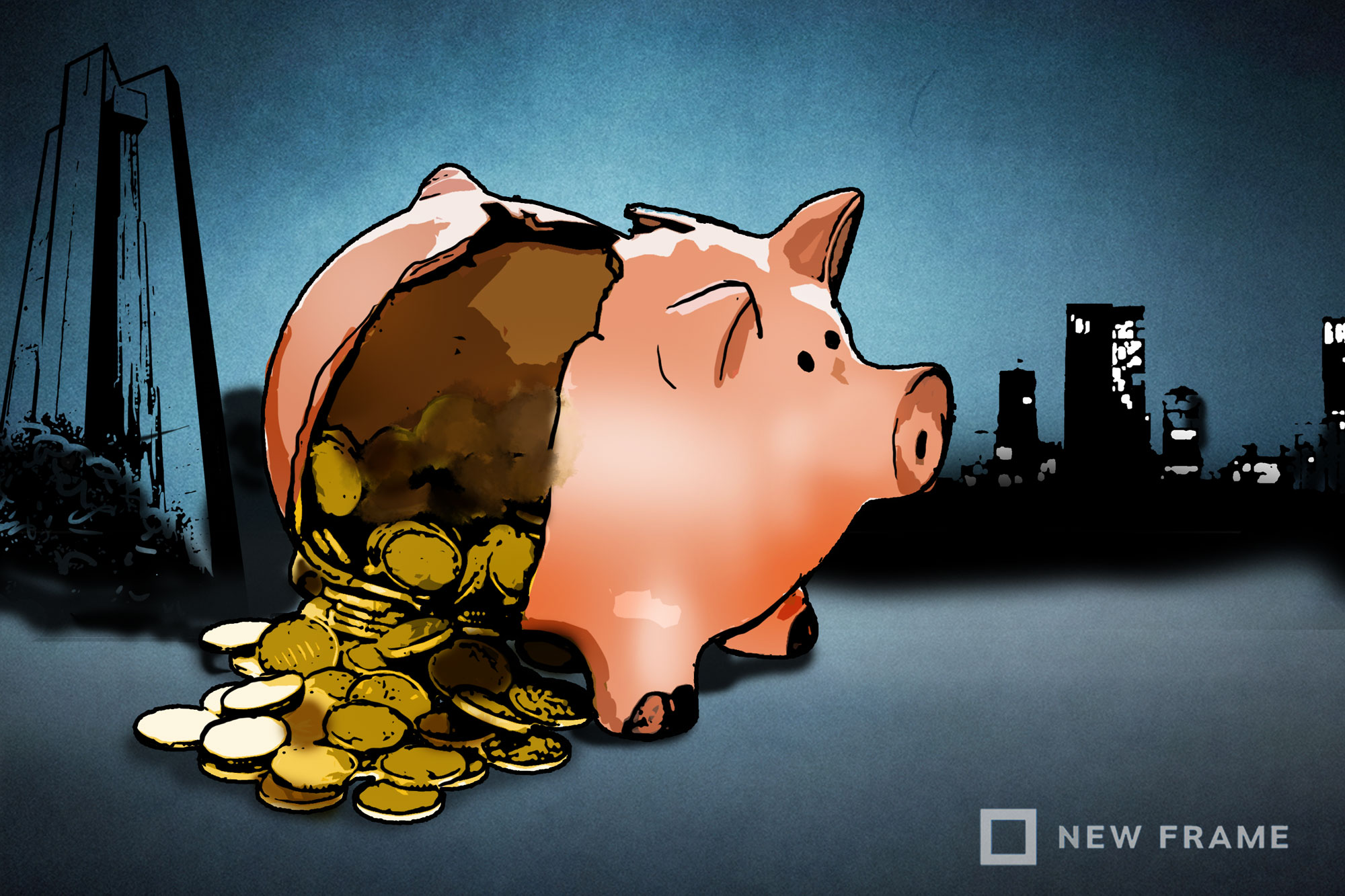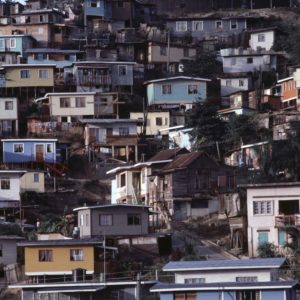SA needs to spend its way out of fiscal trouble
The government sticking doggedly to its path of austerity is not working. If South Africa increases GDP growth, public debt will take care of itself.
Author:
19 November 2021

After an electoral humbling that saw 2.7 million fewer people cast their votes for the ANC than in the 2016 local government elections, when Jacob Zuma was the party’s president, the National Treasury presented a budget that shows the government has given up on trying to reverse the dramatic loss of support for the ruling party and growing the economy to create jobs.
The ANC clearly has a death wish. Why else would it sanction a budget that will result in a weaker economy, further deterioration in municipal service delivery, and rising unemployment and poverty only 30 months before a national election?
In his maiden medium-term budget policy statement on 11 November, Minister of Finance Enoch Godongwana affirmed the government’s commitment to failed economic policies. These resulted in “a lost decade” in terms of economic development, during which gross domestic product (GDP) per capita did not grow between 2009 and 2019.
Related article:
The budget statement provided evidence that there is likely to be a second “lost decade” between 2020 and 2030. In a forecast, which shows that it does not believe that its own economic recovery plan will succeed, the treasury said the economy would revert to its pre-pandemic trend of low GDP growth after a technical rebound in 2021.
The economy will grow by 5.1% during 2021, primarily because there was no hard lockdown this year. But GDP for 2021 will still be 1.5% lower than it was in 2019. The treasury says there will be an average GDP growth rate of 1.7% a year between 2022 and 2024, which will be barely enough to keep up with the growth of the population.
It says GDP per capita will grow at 1% a year between 2022-2023 and 2030-2031. But the budget statement provided no measures to change this bleak outlook that could create an economic wasteland by 2030. It dished out another serving of the austerity and structural reforms that it has presented to the nation every year for a decade without success.
Fiscal space
During the February 2021 budget, the treasury announced austerity measures of R264.9 billion for the three-year medium-term expenditure framework until the 2023-2024 fiscal year. The budget cuts were calculated based on the spending plans that were presented in the 2020 budget.
The medium-term budget policy statement is a mid-year adjustment of the budget based on new economic conditions. It also presents initial projections for the next medium-term expenditure framework cycle for 2021-2022 to 2024-2025, which is confirmed in the February 2022 budget. The major change since the February 2021 budget has been a rebasing of GDP statistics, which found that the economy was 11% higher than previously estimated.
This has created more fiscal space for the government to increase spending. The debt-to-GDP ratio for March declined to 70.7% compared with the previous estimate of 80.3%. After considering government cash balances of R333.9 billion, the net debt-to-GDP ratio was 64.7%. The mid-year adjustments saw a revised estimate of tax revenues for the 2021-2022 year that was R120.3 billion higher than what was presented during the February 2021 budget owing to a boom in world commodity prices.
There were spending increases of R77.3 billion. This included R26.7 billion to pay for the reintroduction of the R350 monthly social relief of distress grant after the riots in July, R20.5 billion to settle a wage dispute with public-sector unions and R11 billion for the second phase of the presidential employment stimulus that created 445 000 short-term jobs. This was offset by drawdowns from the government’s contingency reserve, projected underspending and suspensions of programmes worth R17.9 billion. Therefore, the net addition to spending was R59.4 billion.
Related article:
During the next medium-term expenditure framework period that starts in April 2022, real (after inflation) main budget non-interest spending will decline by 3.3% a year, or about 4.7% a year if one considers the expected growth of the population.
Busi Sibeko, a researcher at the Institute for Economic Justice, says real budgets for basic education, health and social protection will decline by annual averages of 3.1%, 4.8% and 5.8% a year respectively. Real public-sector wages will decline by 3.3% a year. The treasury says the cuts will result in bigger class sizes and worse education outcomes.
But it does not care because the objective of the deep budget cuts is to achieve a primary surplus – the budget deficit excluding interest payments – by 2024-2025. The debt-to-GDP ratio will then stabilise at 77.8%.
The budget statement said there would be no support for state-owned companies. “Decisions on the presidential employment initiative and additional funding for social grants beyond the current year are dependent on revenue outcomes and will be announced in the 2022 budget.”
A growth issue
The treasury’s defence of austerity is through relentless public-debt fearmongering. It says it has overspent since the global financial crisis and Great Recession of 2007-2009. The result was soaring public debt. Higher levels of borrowing pushed up bond yields, the interest cost of the long-term bonds that the government issues. This has crowded out other items of government spending. The extreme right-wing conclusion is that the fiscal multiplier – the additional GDP generated by each rand of new spending – is zero or even negative. If you increase borrowing, bond yields will go up and counter the effect of the stimulus. Since fiscal policy is off the table – because public debt is too high and higher spending will not generate GDP growth – the only option is to have structural reforms.
However, there is no universe in which South Africa has a high debt ratio, even when benchmarked against upper middle-income countries. According to the International Monetary Fund, the world average debt-to-GDP ratio increased by 15 percentage points to 98.6% of GDP in December 2020 from 83.6% the year before. Every country had similar shocks to their GDP and tax revenues. In relative terms, South Africa is where it was before the crisis. Selected debt ratios for upper middle-income countries were Angola (136.5%), Brazil (98.9.%), Egypt (89.8%), India (89.6%) and Sri Lanka (101.2%). On what basis does South Africa have a high debt ratio? There is no tipping point at which a rising debt ratio results in economic collapse. South Africa has a GDP growth problem, not a debt problem. If it increases GDP growth, the bottom part of the debt ratio, the debt will take care of itself.
Related article:
Although it is difficult to isolate the effect of fiscal policies alone, a close analysis of statistics since 1994 shows that the economy performed poorly when government spending was weak and grew rapidly during the one period – between 2004 and 2008 – when it started spending again. South Africa did not overspend after the Great Recession. Between 2009 and 2019, government final consumption spending grew by 1.8% a year.
There were two stages during this period. The economy performed better during the first stage (2010 to 2013) owing to mildly expansionary fiscal policies. Final government consumption spending increased by 3% a year. Public investment increased by 3.9% a year. GDP increased by 2.8% a year. There were budget revenue surpluses – in-year budget revenues compared with budget forecasts – of R28.9 billion during this period, according to the treasury.
During the second stage (2014 to 2019), there was a collapse in the trend GDP growth rate because of contractionary fiscal policies. The growth of government final consumption expenditure declined to 1.1% a year. Between 2013 and 2019, public investment declined by 27.1% . The trend GDP growth rate fell to 1% a year. The collapse in trend GDP growth during the second period resulted in budget revenue shortfalls of R250 billion between 2014-2015 and 2019-2020, according to the treasury. This means that the austerity policies caused the growth collapse and the increase in the debt ratio. A national budget does not operate like a household budget. When a government cuts spending, it reduces its income.
Two pillars
The government’s recovery plan has two pillars: infrastructure spending and structural reforms. In 2020, South Africa had an investment ratio of 13.7% of GDP. The annual shortfall to achieve the National Development Plan’s target of a 30% investment ratio is R900 billion. However, the collapse in public investment since 2013 is the major reason for the decline in total investment. The government has not explained how it will reverse this decline.
Three years after it was mooted by President Cyril Ramaphosa, the government’s R100 billion infrastructure fund has no money. Structural reforms are code for privatisation, deregulation and liberalisation of the economy to create opportunities for the private sector. However, the government’s flagship reforms at Eskom and Transnet will close less than 6% of the annual investment shortfall.
Related article:
Finally, the fiscal multiplier should be seen as a policy variable that the government can control or influence if it coordinates its growth strategy with the Reserve Bank. If South Africa had a real central bank, there are two ways it could reduce the cost of the government’s borrowing programme. It could implement a yield curve control policy, as has been practised in countries such as Japan and Australia, where the central bank sets a target for long-term bond yields and commits to purchase as many bonds as is required to meet the target. The Reserve Bank could also directly finance government spending at no cost, or on favourable terms with a payment holiday until the economy recovers.
The only way out of the worst post-apartheid economic and social crisis is for the government to start making large investments in its people and infrastructure.




